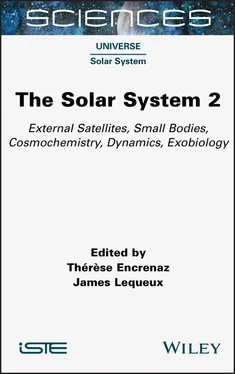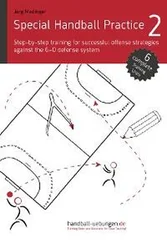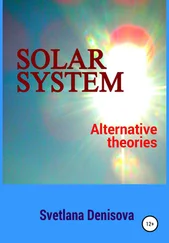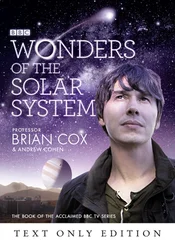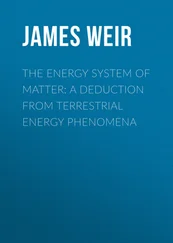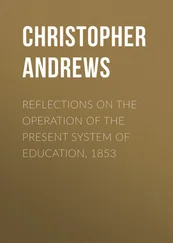..Figure 2.30. (a) Hildas (black dots) and Trojans (gray dots) seen from the plane...Figure 2.31. Orbits of the asteroids after which we name the groups of “planet c...Figure 2.32. The light curve of an asteroid makes it possible to determine its r...Figure 2.33. The shape of several objects encountered by space probesFigure 2.34. (a) Map of the relief of the south pole of (4) Vesta. (b) The walls...Figure 2.35. The three rubble-pile asteroids explored by the JAXA space missions...Figure 2.36. Representative absorption spectra (between 0.45 µm and 2.45 µm) of ...Figure 2.37. Spectra of Vesta and the HED meteorites (source: based on (Ferrari ...Figure 2.38. Position of the trans-Neptunian asteroids on January 5, 2019. For a...Figure 2.39. Sequence of photos that allowed D. Jewitt and J. Luu to discover 19...Figure 2.40. Image of the classic KBO (486958) Arrokoth (source: NASA/JHU/APL/SW...Figure 2.41. Spectra of several trans-Neptunian objects (indicated by their numb...Figure 2.42. Aggregate of small grains in the Orgueil meteorite (source: (Mukhop...Figure 2.43. The dwarf planets (source: based on NASA images). For a color versi...Figure 2.44. The dwarf planet Ceres: in the center of the photo (false colors), ...Figure 2.45. Internal structural model of Ceres. Ceres probably has a solid core...Figure 2.46. The mountain Ahuna Mons, on Ceres, seen in simulated perspective; t...Figure 2.47. The dwarf planet Pluto (source: NASA/JHU/APL/SWRI). For a color ver...Figure 2.48. Craters and mountain chains on Pluto. (a) Most of the craters in th...Figure 2.49. Location of some structures on the surface of Pluto (source: NASA/J...Figure 2.50. The five satellites of Pluto (source: NASA/JHU/APL/SWRI)Figure 2.51. Charon and its surface (source: NASA/JHU/APL/SWRI). For a color ver...
3 Chapter 3Figure 3.1. One of the stones found near Chelyabinsk; this stone is broken and t...Figure 3.2. Average number of objects colliding with Earth’s atmosphere each yea...Figure 3.3. Surface of the moon riddled with impact craters; the large crater th...Figure 3.4. Fragment of chondrite from Bremervörde (sample MNHN no. 108, 2.6 cm ...Figure 3.5. (a) Cut and polished slice of the Boguslavka iron meteorite (sample ...Figure 3.6. Diagram of planetary accretion and differentiation. For a color vers...Figure 3.7. Main groups of meteorites. These groups are subdivided into a number...Figure 3.8. The chemical composition of chondrites. For a color version of this ...Figure 3.9. Overview and detailed view of two CV3 chondrites. For a color versio...Figure 3.10. Thin sections of four primitive chondrites seen in transmitted ligh...Figure 3.11. The matrix of primitive carbonaceous chondrites contains presolar g...Figure 3.12. The proportions and sizes of different chondritic components (matri...Figure 3.13. Variations in relative concentration of 16O, 17O, and 18O in groups...Figure 3.14. Isotopic signatures in Ti, Cr, and O divide meteorites into two mai...Figure 3.15. The eucrites and Vesta. For a color version of this figure, see www...Figure 3.16. Widmannstätten pattern of iron meteorites. For a color version of t...Figure 3.17. (a) View from a scanning electron microscope of a rocky fragment of...Figure 3.18. Determination of the age of zircons in the Martian impact breccia N...Figure 3.19. The main steps of the formation of the Solar System from an interst...
4 Chapter 4Figure 4.1. Alignment of the planets and the Moon in mid-April 2020, observed fr...Figure 4.2. Parameters of the ellipse (source: based on (Shields et al. 2016))Figure 4.3. Gravitational forces between Earth and the Moon. For a color version...Figure 4.4. Orbital coordinates in three-dimensional space. Z indicates north (s...Figure 4.5. Conic sections (source: based on (Murray and Dermott 2000))Figure 4.6. Circular restrained three-body problem (source: based on (Marzari et...Figure 4.7. Two bodies in 2:1 resonance; the outer body revolves once around the...Figure 4.8. An example of integration of planetary orbits from -10 to 15 billion...Figure 4.9. (a) Evolution of the obliquity of the Earth and (b) of sunlight expo...Figure 4.10. (a) Attraction of a (non displayed) satellite on the surface (black...Figure 4.11. Assessment of forces acting on a mass m at a frame linked to the pl...Figure 4.12. Ratio between radiation pressure and gravitational force as a funct...Figure 4.13. Possible scenario for the initial evolution of the Solar System in ...Figure 4.14. Process of the formation of Jupiter. The red curve is the mass of s...Figure 4.15. Possible scenario for the evolution of giant planets formed in a di...Figure 4.16. Proportion of open star clusters surrounded by massive protoplaneta...Figure 4.17. Image of the disk of the young star DoAr 44 with surrounding dust (...Figure 4.18. Type 1 migration of a planet of terrestrial mass in a protoplanetar...Figure 4.19. Evolution of giant planets in the presence of a disk of planetesima...Figure 4.20. (a) Comparison of the sizes of planets in the Kepler-90 system and ...
5 Chapter 5Figure 5.1. Temperature decrease in the oceans since 3.5 billion years ago, shor...Figure 5.2. Formation of a peptide link between two amino acids. R 1and R 2are c...Figure 5.3. Example of a structural fragment of DNA formed by four nucleotides c...Figure 5.4. An example of a fragment of the DNA double helixFigure 5.5. Formula for a typical phosphoglyceride. Group 1 is choline, group 2 ...Figure 5.6. Structure of lipid layers. For a color version of this figure, see w...Figure 5.7. Diagram representing Carl Woese’s tree of life (1928–2012)Figure 5.8. Possibilities of life on Mars, Earth, and Venus. For a color version...Figure 5.9. The surface of Europa is covered with cracks, as shown in this image...Figure 5.10. Enceladus and two fragments of the rings of Saturn, seen backlit by...Figure 5.11. Cryovolcanism on the surface of Enceladus. Heated saltwater rises t...
6 Chapter 6Figure 6.1. Uranus imaged by the Hubble Space Telescope’s CCD camera in 2003. Th...Figure 6.2. Diagram representing the spectrum of a planet from the visible to th...Figure 6.3. Degree of polarization as a function of reflectivity for planets in ...Figure 6.4. Analysis of an atmosphere by the stellar occultation method: refract...Figure 6.5. Radio emissions from JupiterFigure 6.6. Images of synchrotron radiation from Jupiter’s radiation belts. For ...Figure 6.7. State of exploration for bodies in the Solar System. For a color ver...Figure 6.8. Phases of the Huygens probe mission in the atmosphere of Titan (sour...Figure 6.9. Optical diagram of the E-ELT, with its original anastigmatic configu...Figure 6.10. LIDT-DD simulation of a giant collision in a disk of debris, 300 ye...Figure 6.11. Synthetic Sphere image of an impact in a disk (source: (Kral 2014))...Figure 6.12. Representative diagram of a GCM. The atmosphere is represented in t...Figure 6.13. (left) Column density of water vapor and (right) opacity of clouds ...
1 Chapter 1Table 2.1. Some notable unnumbered comets.Table 2.2. Some notable short-period comets (among the numbered comets). The ret...Table 2.3. Space exploration of the comets; D and V are distance and speed relat...Table 2.4. Orders of magnitude for the size and activity of several typical come...Table 2.5. Properties of some molecules outgassed from cometary ice. X is the ab...Table 2.6. Main physical properties of 5 asteroids explored by space probes in o...Table 2.7. Main properties of dwarf planetsTable 2.8. List of candidate dwarf planets
1 Cover
2 Table of Contents
3 Title Page SCIENCES Universe , Field Director – Fabienne Casoli Solar System , Subject Head – Thérèse Encrenaz
4 Copyright First published 2021 in Great Britain and the United States by ISTE Ltd and John Wiley & Sons, Inc. Apart from any fair dealing for the purposes of research or private study, or criticism or review, as permitted under the Copyright, Designs and Patents Act 1988, this publication may only be reproduced, stored or transmitted, in any form or by any means, with the prior permission in writing of the publishers, or in the case of reprographic reproduction in accordance with the terms and licenses issued by the CLA. Enquiries concerning reproduction outside these terms should be sent to the publishers at the undermentioned address: ISTE Ltd 27-37 St George’s Road London SW19 4EU UK www.iste.co.uk John Wiley & Sons, Inc. 111 River Street Hoboken, NJ 07030 USA www.wiley.com © ISTE Ltd 2021 The rights of Thérèse Encrenaz and James Lequeux to be identified as the authors of this work have been asserted by them in accordance with the Copyright, Designs and Patents Act 1988. Library of Congress Control Number: 2021940272 British Library Cataloguing-in-Publication Data A CIP record for this book is available from the British Library ISBN 978-1-78945-034-7 ERC code: PE9 Universe Sciences PE9_1 Solar and interplanetary physics PE9_4 Formation of stars and planets
Читать дальше
